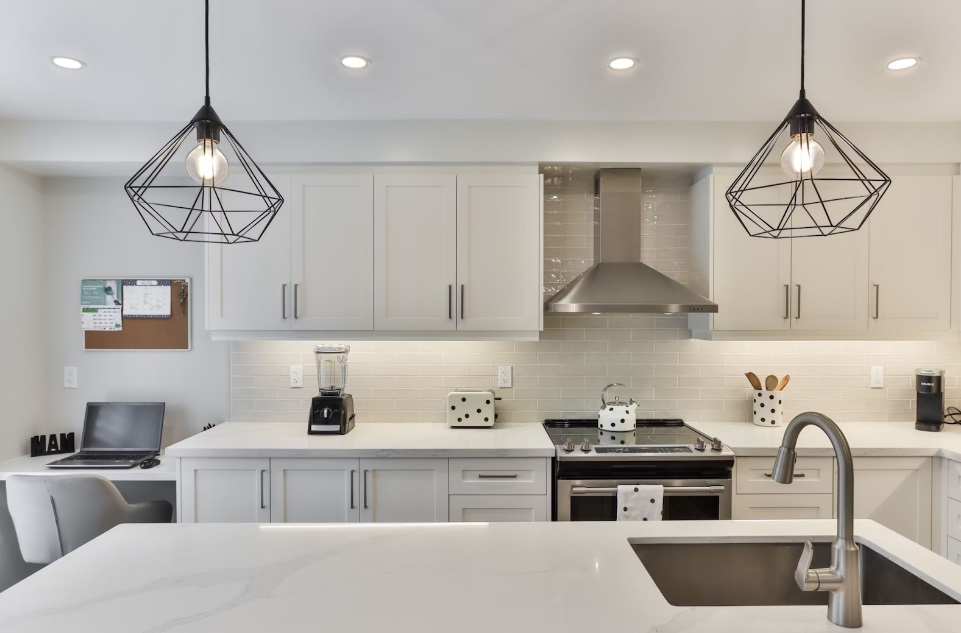In the realm of home design, the kitchen stands as the heart of the household, embodying both functionality and aesthetic appeal. As such, its design holds significant weight in determining the overall appeal and utility of a home. In today’s digital age, home design companies are leveraging online tools to streamline their processes, enhance efficiency, and offer unparalleled service to clients.
Delve into the pivotal role of kitchen design efficiency, exploring how it serves as a competitive advantage for home design firms utilizing online tools. Furthermore, it assesses the impact of modern technology, including the utilization of the best kitchen design software, in revolutionizing kitchen layout planning and execution.
The Significance of Kitchen Design Efficiency
Efficiency in kitchen design encompasses various aspects, ranging from space utilization to workflow optimization. In a competitive market, home design companies must prioritize efficiency to meet client demands promptly and cost-effectively. Efficient kitchen design not only ensures optimal space utilization but also enhances functionality, catering to the diverse needs and preferences of homeowners.
Moreover, kitchen design efficiency directly influences customer satisfaction and retention. Clients seek designs that align with their lifestyle, preferences, and budget constraints. By leveraging online tools and innovative software solutions, home design companies can offer personalized kitchen layouts tailored to individual requirements. This bespoke approach fosters client engagement and loyalty, setting firms apart from competitors.
The Evolution of Online Tools in Kitchen Design
The advent of online tools has revolutionized the traditional approach to kitchen design. Designers now have access to an array of digital resources, facilitating collaboration, visualization, and project management. From 3D modeling software to virtual reality platforms, these tools empower designers to conceptualize, refine, and present kitchen layouts with unparalleled precision and efficiency.
Furthermore, online tools enable seamless communication between designers, clients, and contractors, fostering transparency and alignment throughout the design process. Real-time updates, interactive design reviews, and virtual walkthroughs enhance client engagement and ensure that their vision is accurately translated into reality.
Best Kitchen Design Software: Empowering Innovation and Creativity
Central to kitchen design efficiency is the utilization of the best kitchen design software. These advanced applications offer a myriad of features and functionalities designed to streamline the design process and elevate creativity. From intuitive user interfaces to extensive libraries of customizable components, the best kitchen design software empowers designers to unleash their creativity and bring concepts to life.
One notable example is Cedreo Architecture, a versatile software solution renowned for its robust design tools and comprehensive documentation capabilities. With Cedreo, designers can create detailed floor plans, elevations, and 3D models, facilitating seamless collaboration and project coordination.
Similarly, SketchUp Pro offers a user-friendly platform for conceptualizing and visualizing kitchen layouts in 3D. Its intuitive interface and extensive plugin ecosystem enable designers to experiment with different design elements, materials, and finishes, fostering innovation and iteration.
Maximizing Efficiency Through Digital Collaboration and Automation
In addition to design software, home design companies are leveraging digital collaboration platforms and automation tools to maximize efficiency and productivity. Cloud-based project management systems such as Trello and Asana enable seamless task allocation, progress tracking, and communication, ensuring that projects remain on schedule and within budget.
Moreover, automation tools such as Zapier and IFTTT streamline repetitive tasks and workflows, freeing up time for designers to focus on creativity and problem-solving. By automating mundane tasks such as file organization, email notifications, and data entry, designers can devote more energy to delivering exceptional design solutions that exceed client expectations.
The Role of Data Analytics in Kitchen Design Optimization
Data analytics plays a pivotal role in optimizing kitchen design efficiency and performance. By analyzing historical project data, designers can identify patterns, trends, and opportunities for improvement, informing future design decisions and strategies. For example, analytics tools can highlight common design challenges, preferred layout configurations, and material preferences, enabling designers to proactively address client needs and preferences.
Furthermore, predictive analytics algorithms can forecast project timelines, resource requirements, and potential bottlenecks, empowering firms to allocate resources strategically and optimize project workflows. By leveraging data-driven insights, home design companies can enhance operational efficiency, minimize risks, and maximize profitability in a competitive market landscape.
Case Studies
To illustrate the practical implications of kitchen design efficiency, let us consider the case of Kitchen Design Company X. Faced with increasing competition and client expectations, the company sought to differentiate itself by prioritizing efficiency and innovation in its design process.
By investing in the best kitchen design software and online collaboration tools, Kitchen Design Company X streamlined its design workflow, from initial concept development to final installation. Designers leveraged 3D modeling software to create immersive virtual renderings of proposed kitchen layouts, allowing clients to visualize designs in detail before making decisions.
Moreover, the company implemented automated project management systems to streamline communication, task allocation, and progress tracking across teams. Real-time collaboration tools facilitated seamless communication between designers, clients, and contractors, ensuring that projects remained on schedule and within budget.
As a result of these initiatives, Kitchen Design Company X experienced a significant increase in client satisfaction, referrals, and repeat business. By delivering personalized kitchen designs efficiently and effectively, the company established itself as a market leader, setting new standards for excellence in kitchen design.
Conclusion
Kitchen design efficiency serves as a cornerstone of success for home design companies seeking to thrive in a competitive market landscape. By leveraging online tools, including the best kitchen design software, firms can streamline their design processes, enhance creativity, and exceed client expectations. Through digital collaboration, automation, and data analytics, designers can optimize project workflows, minimize risks, and maximize profitability.
As technology continues to evolve, home design companies must embrace innovation and adapt to changing client preferences and market dynamics. By prioritizing efficiency and leveraging digital tools effectively, firms can gain a sustainable competitive advantage, positioning themselves for long-term success in the dynamic world of kitchen design.
Read More: Experience Tranquility: Discovering the Allure of Beachfront Resorts
